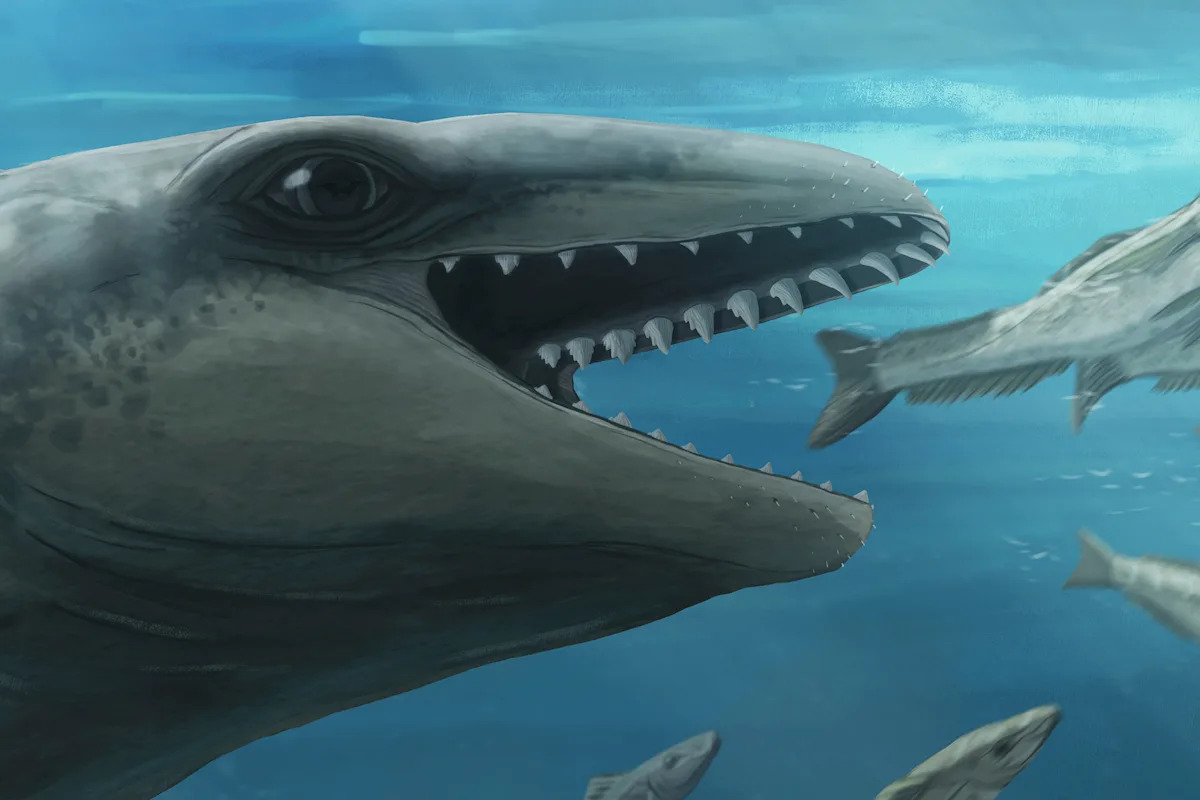A remarkable fossil discovery on an Australian beach has led paleontologists to identify a new species of prehistoric whale, named Janjucetus dullardi. This find, dated at approximately 25 million years old, could shed light on the evolution of modern whales. The identification was officially announced this week in the Zoological Journal of the Linnean Society.
The Janjucetus dullardi is described as a quirky creature, with bulging eyes resembling tennis balls and sharp teeth adapted for hunting. Unlike contemporary whales, this juvenile specimen was small enough to fit into a single bed, showcasing a stark contrast to the massive whales we see today. “It was, let’s say, deceptively cute,” remarked Erich Fitzgerald, senior curator of vertebrate paleontology at Museums Victoria Research Institute and a co-author of the study. He likened its appearance to a whimsical combination of a whale, seal, and a character from a video game.
Significance of the Discovery
The fossil was discovered in 2019 at Jan Juc Beach, a site known for its rich paleontological history. The region has produced several significant whale fossils, making it a critical area for understanding the early evolution of these marine mammals. The discovery of the partial skull, including ear bones and teeth, marks only the fourth species identified from a group known as mammalodontids—early whales that thrived during the Oligocene Epoch, around 34 to 23 million years ago.
These small predators, estimated to reach lengths of up to 3 meters (10 feet), represent an early branch in the evolutionary lineage that led to today’s baleen whales, including humpbacks and blues. Fitzgerald noted that the anatomy of these ancient whales would have been strikingly different from modern species, possibly featuring rudimentary legs.
The Janjucetus dullardi provides valuable insights into the dietary habits, movement, and behavior of prehistoric whales. Understanding these adaptations can help researchers comprehend how ancient cetaceans coped with warmer ocean environments, offering perspectives on how current marine life might react to ongoing climate change.
A Personal Journey to Discovery
The species is named in honor of Ross Dullard, an amateur fossil hunter who discovered the skull while searching for fossils at Jan Juc Beach. “It’s literally been the greatest 24 hours of my life,” Dullard expressed, reflecting on the excitement following the confirmation of the new species. He described his experience of finding the fossil as serendipitous; while exploring, he noticed a black protrusion from a cliff, which, upon closer inspection, turned out to be a tooth.
Dullard’s discovery is significant, as identifying mammalodontids has proven challenging, with this being the first such identification in Australia since 2006. Fitzgerald emphasized that high-quality fossils are rare, as many factors such as erosion and scavenging can hinder the preservation of whale skeletons over millions of years.
The excitement surrounding Janjucetus dullardi has inspired Dullard to organize a celebration, complete with cetacean-themed games and whale-shaped treats. He plans to share his joy with friends and family, who have eagerly listened to his passionate stories about his fossil hunting adventures for the past six years.
The discovery of Janjucetus dullardi not only enriches our understanding of whale evolution but also highlights the importance of paleontological research in uncovering the mysteries of ancient marine life.
